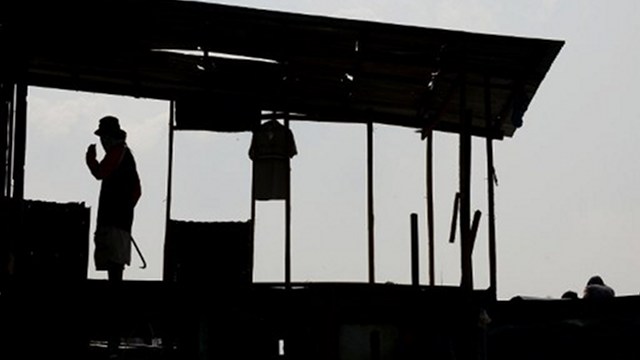SUMMARY
This is AI generated summarization, which may have errors. For context, always refer to the full article.

MANILA, Philippines – Local property developers have set their eyes on a complex but potentially profitable market segment: informal settlers.
At the “inclusive business” forum at Asia Development Bank’s headquarters on Monday, November 26, Phinma Property Holdings Corp. president and CEO William Uy shared the opportunities and challenges behind a business strategy that includes housing units that cost a little over P2,000 a month.
He talked about working with government, which provides cheap financing to Informal Settler Families (ISF’s) or squatters banks would not generally lend to, as well as strategies that involve keeping the cost of doing business and delivering the finished product low.
“Though Phinma Properties holds a niche in the broad B and C market, there is a much bigger and untapped Class D market – currently growing due to the ever-growing population of Metro Manila,” said Uy, explaining the high demand for low-cost housing.
Phinma recently constructed Bistekville, an onsite relocation housing development for informal settlers. Construction began in January 2012. So far 125 units of the 921 row houses in Bistekville have been turned over and 115 unit owners have moved in since June.
Uy says unit owners in Bistekville pay as low as P2,273.84 monthly, roughly 20% to 25% of their income, for 30 years with no down payment or balloon payment.
Settlers are also able to take advantage of affordable amortizations from state-run provident entity, the Home Development Mutual Fund, also called Pag-IBIG.
Why target the poor
The mass housing market has only recently been added to the portfolio of private sector real estate developers, a sector which was previously dominated by government initiatives, mostly based on large scale relocation projects, a recent ADB survey showed.
Citing a World Bank Report, Uy said that “the Philippines has one of the highest rates of urban growth in the developing world.”
As of 2010, the number of ISF’s in Metro Manila totalled 556,526 with Quezon City making up 40% of the total at 222,744. “This study supports why we engaged the poor as a customer,” Uy added.
Along with Phinma Property Holdings, private developer, Ayala Land Inc. is also developing low-cost housing. Ayala’s middle-to-low income housing brand has three brands; Scapes, Steps and Skies. These new projects would add 14,070 additional units on top of the 7,276 units offered in the market last year.
Ayala Land chairman Jaime Augusto Zobel de Ayala brought up the need to for private sector involvement in low income developments at ADB forum on Monday.
“You need to find a private sector solution to the social problems of the country. You see a parallel track coming through where you see the private sector becoming a solution in the arena but it must be oriented around a profit-centered solution,” he said.
Reducing costs
Developers such as Phinma are able to offer low housing by reducing land aquisition and building design costs. The land was purchased cheaply at P2,700 per square meter from a landowner who could not use her 4.4 hectare property for the past 30 years due to the informal settlers who were occupying her land.
“Owners, who own properties affected by informal settlers within their area, now realize the value of their properties. Real estate and housing developers, challenged with the scarcity of land in key locations inside urbanized cities, have now unlocked land that was once considered useless by landowners,” said Uy.
By negotiating the project as part of socialized housing compliance to Sector 18 of R.A. 7279 or the Urban Development Housing Act (UDHA), Phinma was also able to receive 30% off taxable income from profit as incentive.
“Faster relocation and turnover saves the LGU (local government unit) from paying excess construction and overhead costs to its contractor; in-city and on-site relocation helps lessen the effort to convince ISF to relocate; peace and order improves as ISF become law abiding and tax-paying citizens; health and living conditions of the community improves,” said Uy.
The developers also saved money by building only up to 5 floors. Higher than that, it would be required by law to install an elevator. “Elevators cost a lot and there would be problem of monthly dues cost of elevator,” said Uy.
Government incentives
However, despite acquiring land at a low cost and cutting back on construction costs, the developer is still only just breaking even.
For their next proposed development, Capitol Hills which will consist of mid-rise residential buildings housing 10,00 residential units, Phinma is looking to partner with the government and construction companies to lower cost for socialized housing projects.
“We are asking for some incentives to continue doing these projects for the poor. Through incentives, we can bring down costs of housing to below P400,000. We also want national government offices to waive permitting fees,” said Uy.
“What’s important is to get more developers involved in social housing. There are 400,000 housing units needed in Metro Manila and [the government] needs to offer incentives to developers so more players can come in and help the poor,” Uy stressed. – Rappler.com
Add a comment
How does this make you feel?
There are no comments yet. Add your comment to start the conversation.